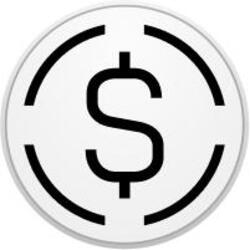Legendary investor Warren Buffett is sitting on a record $334 billion in cash , but he hasn’t said why his cash position is so large. Hedge fund manager Steve Cohen recently said that the Trump administration’s tariffs and large-scale budget cuts by Elon Musk’s Department of Government Efficiency could be bad for the economy and stock market. When the best investor and one of the top traders in the world both appear cautious, maybe it’s time to pay attention. In his annual letter to shareholders, Buffett has not offered any explicit reason for Berkshire Hathaway ‘s record cash hoard. But you don’t have to be storied financier Bernard Baruch to figure out that stashing cash is not the most bullish of signs. Warning signs The bear case has been made for some time now, as investors who previously urged caution pointed to a number of warning signs that are flashing in the market: Lofty valuations Deteriorating market breadth Highly concentrated returns in just a handful of mega-cap stocks Irrational exuberance over the promise of artificial intelligence Uncertainty over monetary and fiscal policies Worries about trade relations and geopolitical risk Looming issues around government funding Continued increases in federal deficits and the national debt It’s a common saying that the stock market climbs a “wall of worry” and that overt pessimism is a contrary indicator. But aside from Buffett and Cohen, individual investors and self-directed traders have been pouring money into equities at a relatively brisk pace of late. This suggests that the public is still quite bullish on the prospects for U.S. stocks. Prudent pruning and diversification As I wrote in December, taking some chips off the table would not be unwise. Pruning one’s portfolio, especially after two years of sizable gains, is a prudent thing to do. I also suggested earlier this year that tactical traders might want to swap some U.S. indexes for their European counterparts. Despite concerns about the European Union’s economy, its relationship with the U.S. and the ongoing geopolitical risks related to Ukraine, European markets continue to outperform the S & P 500 and the Nasdaq Composite . Indeed, the Stoxx Europe 600 index is up nearly 9% in 2025, while the S & P 500 has an advance of more than 2%. .STOXX .SPX YTD line The Stoxx Europe 600 vs. the S & P 500 in 2025 Domestic political concerns may also soon have an impact on U.S. financial markets. A few House Republicans have been getting an earful from constituents concerned about Elon Musk’s attempted overhaul of various federal agencies, NBC News reported . There are economic risks to mass firings and furloughs. Assuming there is a limit to the buyouts offered to a swath of federal employees, jobless claims could jump. The overall employment situation could make it appear the U.S. economy is tilting toward recession while consumers are also increasingly worried about inflation. A stagflation scenario – that is, a combination of high inflation and stagnant economic growth –is most certainly not priced into markets even though the possibility has been raised by some economists. In short, it may be a time for caution when it comes to buying the dip as investors have been taught to do. Rather than buying the dip, it might simply be time to sell the rallies. — CNBC contributor Ron Insana is CEO of iFi.AI, an artificial intelligence fintech firm.











































